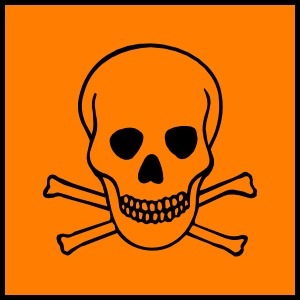Radiation therapy errors top ECRI's health tech hazards list for 2011
by
Brendon Nafziger, DOTmed News Associate Editor | December 10, 2010

A nurse overwhelmed by the beeps and blips of patient monitors who ignores a critical alarm. An endoscope improperly cleaned that goes on to infect scores of patients. A software error that leads to a cancer patient receiving too much radiation.
These are among the 10 most urgent health technology hazards identified by the ECRI Institute in its annual report released last month.
Every year, the health care research nonprofit compiles a list of the most pressing medical technology troubles. These aren't necessarily the most common or even the most severe hazards, the group said. "Rather, it reflects our judgment about which risks should receive priority now," ECRI said in the report.
This year, there was quite a bit of carryover from the previous year's list. About half of last year's items have returned, including CT radiation dose worries, the danger of improperly cleaned endoscopes and needlestick injuries, showing the tenacity of these problems -- and the publicity they often get.
Here, according to ECRI, are the top 10 health tech hazards for 2011:
10. Defibrillator failures
External defibrillators save lives, but there's little room for mistakes during an emergency. The U.S. Food and Drug Administration said between 2005 and 2010, the agency received 28,000 adverse event reports for external defibrillators, including malfunctions, injuries and deaths. Oftentimes, the problems with the devices are preventable, such as having a depleted battery and not carrying a charged spare, ECRI said.
9. Surgical fires
ECRI says there are at least 600 surgical fires every year, making them as common as wrong-site surgeries. Some new mandates try to prevent fires: for instance, now, with few exceptions, doctors are told to avoid open delivery of 100 percent oxygen during head, face, neck and upper-chest surgery, ECRI said.
8. Sharps injuries
A toddler taken to a clinic for a skin rash now needs drug cocktails to prevent HIV because she was pricked by needles left on the floor, according to her family. This case, reported by CNN in October, shows that despite almost two decades of work and national legislation, needlestick and sharps injuries are still a huge problem for health care. There are roughly 384,000 such injuries each year, according to a recent Journal of the American College of Surgeons report, although the rate has been declining in nonsurgical settings.
7. Oversedation from PCA infusion pumps
While infusion pump errors are well-known and have inspired numerous FDA investigations, ECRI chose to focus on one particular pump problem this year: oversedation as a result of patient-controlled analgesic delivery. Programming errors on the pumps or patient sensitivity to opioids can lead to potentially deadly narcotic-induced respiratory depression, ECRI said. One concern is that until recently the incidence of PCA-induced problems was underreported, as these patients are often in low-acuity wards and not routinely monitored. For instance, ECRI says in a 2007 study respiratory depression was found in 41 percent of postoperative patients undergoing PCA treatments, much higher than the 1 to 2 percent prevalence mentioned in the literature.
